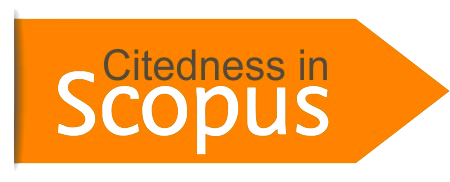PROGRAM BIMBINGAN DAN KONSELING BAGI SISWA TUNANETRA DI SEKOLAH INKLUSIF
DOI:
https://doi.org/10.15575/psy.v6i1.2129Keywords:
Guidance and Counseling Program, Blind students, inclusive programAbstract
One of the basic change in exceptional education is inclusive program. The most perspective population to have inclusive program are blind students. Potential development of blind students in inclusive program is not adequate with educational intervening class but guidance and counseling. This research aims to formulate guidance and Counseling program for blind students who are studying at YPI Senior High School Bandung through inclusive program. The result of this research produce guidance and counseling program which consist of (1) information service guidance (2) academic guidance and (3) social personal guidance.
References
Barraga, N .(1983). Visual Handicappeds and Learning,. Austin: Tex: Exceptional Resources
Dahlan, M.D. (1988). Posisi Bimbingan dan Penyuluhan Pendidikan Dalam Kerangka Ilmu Pendidikan—Pidato Pengukuhan Jabatan Guru Besar. Bandung: FIP IKIP Bandung
Direktorat Pembinaan Sekolah Luar Biasa, Kegiatan Belajar Mengajar di Sekolah Inklusif, (http : // www.ditplb.or.id/2006/), 7 Desember 2007
Direktorat Pembinaan Sekolah Luar Biasa, Mengenal Pendidikan Inklusi, (http : // www.ditplb.or.id/2006/), 7 Desember 2007
Djumhur. I dan Surya. Moh. (1975). Bimbingan dan Penyuluhan di Sekolah (Guidance & Counseling). Bandung : CV Ilmu.
Gibson R.L. & Mitchel M.H. (1981). Introduction to Counseling and Guidance. New York : Mac Millan Publishing Company.
Hall, Calvin S. & Lindzey, Gardner. (1993). Teori-Teori Holistik ( Organismik-Fenomenologis). (Terjemahan). Yogyakarta: Kanisius.
Hardman, L. et al. (1990). Human Exceptionality; Society, School, and Family. Boston-London-Sydney-Toronto: Allyn and Bacon
Hidayat. (2009). Model dan Strategi Pembelajaran Anak Berkebutuhan Khusus Dalam Setting Pendidikan Inklusif (Makalah). Bandung: Jurusan PLB FIP UPI.
Kartadinata, Sunaryo. (1998). Bimbingan di Sekolah Dasar. Bandung: Maulana.
Mortensen, Donald G. and Schmuller, Allen M., (1964). Guidance In Today’s Schools, New York, John Wiley & Sons, Inc., London.
Natawidjaja, Rohman. (1988). Peranan Guru Dalam Pendidikan di Sekolah. Bandung : CV Abardin.
Norwich, B. (1996). Special Education or Educational for All: Connective Specialisation and Ideological Impurty. British: Journal of Special Education, 22,3, pp. 100-104
Shertzer, B. & Stone-Shelley,C., (1971) Fundamental of Guidance. New York: Houghton Mifflin Company.
Slameto.(1988). Bimbingan di Sekolah. Jakarta : PT Bina Aksara.
Suhaeri dan Purwanta, Edi. (1996). Bimbingan dan Konseling Anak Luar Biasa. Departemen Pendidikan dan Kebudayaan. Jakarta.
Subagio. (1999). Studi Komparasi tentang Motif Berprestasi Pada Siswa Tunanetra yang Mengikuti Pendidikan di SLB dan di Sekolah Terpadu (Skripsi). Bandung: PLB FIP IKIP Bandung
UNESCO (1994), The Salamanca Statement and Framework for Action on Special Needs Education, World Conference on Special Needs Education: Access and Quality. Paris: UNESCO and the Ministry of Education, Spain. Versi pdf., http://portal.unesco.org/education/en/ev.php.
Peraturan Perundang-Undangan:
Undang-Undang No. 2 tahun 1989 tentang Sistem Pendidikan Nasional. Semarang: Aneka Ilmu
Undang-Undang No. 20 tahun 2003 tentang Sistem Pendidikan Nasional. Semarang: Aneka Ilmu
Downloads
Published
Issue
Section
Citation Check
License
The author whose published manuscript approved the following provisions:
1. The right of publication of all material published in the journal / published on the E-Journal of Psychology website is held by the editorial board with the knowledge of the author (moral right remains the author of the script).
2. The formal legal provisions for access to digital articles of this electronic journal are subject to the terms of the Creative Commons Attribution-ShareAlike license (CC BY-SA), which means that the Journal of Psychology reserves the right to save, transmit media / format, manage in database form, , maintain, and publish articles without requesting permission from the Author as long as it continues to include the name of the Author as the owner of Copyright.
3. Printed and published print and electronic manuscripts are open access for any purposes. In addition to these objectives, the editorial board shall not be liable for violations of copyright law.
Â






